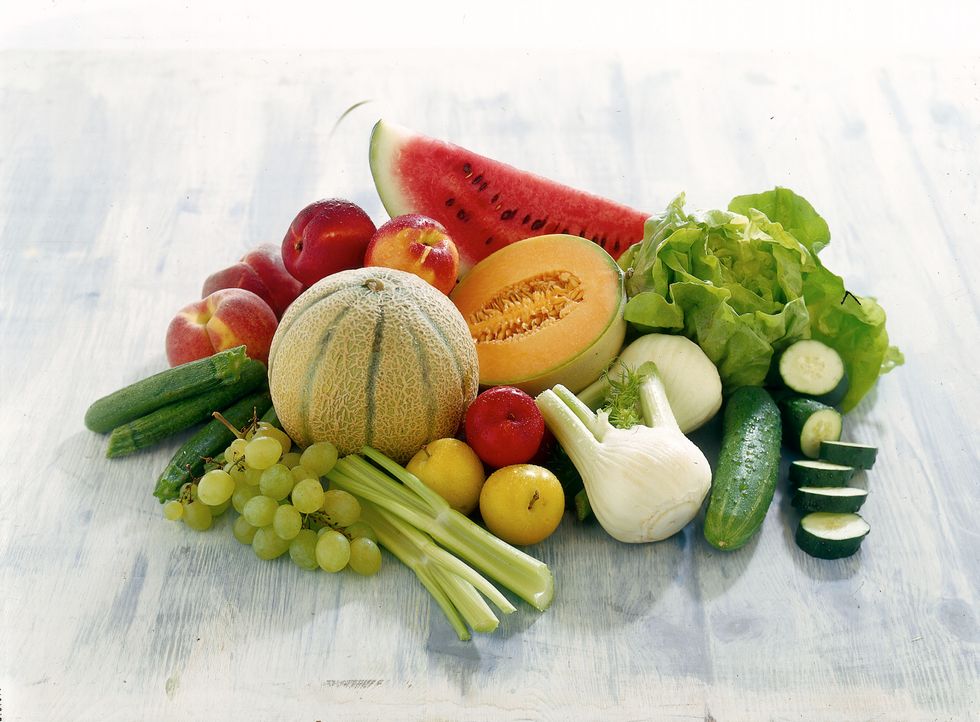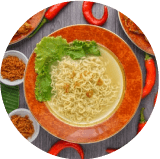Vitamin C: the 10 richest foods

It plays a crucial role in strengthening the immune system and preventing colds and seasonal ailments. The best way to take it is to consume these 10 foods regularly
Nature throughout the year gives us different foods to meet the needs of our body. Winter is the classic period of flu and colds, a period in which you need to fill up on fruits and vegetables high in vitamin C.
Vitamin C or ascorbic acid is in fact a powerful antioxidant that helps fight oxidative stress, stimulates the production of collagen in the skin and in the bones and improves the tone and firmness of the epidermis. It helps to absorb the iron contained in food, prevent the risk of cardiovascular disease and, by balancing the levels of vitamin E, plays a fundamental role in tissue repair.
In short, according to experts, ensuring the right dose of this vitamin is essential for maintaining good health. And, especially in this period, taking it daily makes it a precious ally in preventing and combating seasonal ailments.
The recommended daily dose is 60/80 mg for children and 90 mg for adults. A separate chapter for smokers, who, to counteract the oxidative stress caused by smoking, should take about 135 mg. The best way to get it is through a balanced and varied diet.
10 foods rich in Vitamin C
Our body is not able to produce it: the best way to find it is through a balanced diet. The main source of supply is fresh fruit and vegetables, with different concentrations depending on the variety. Here are the 10 richest strains in vitamin C.
1 Guava
It is a tropical fruit grown in Central America, especially Brazil, Colombia, Mexico and Venezuela. With us it is not easy to find, it can be found in some points of sale in large distribution, but not all year round; it is available all year round in ethnic shops. In Italy, the plant is grown mainly in Sicily, from the end of October to mid-December. Contains four times the vitamin C of an orange or 228 mg per 100 grams. Just eat the fruit, sliced, peeled and seeded to ensure 126 mg of ascorbic acid.
2 Black currants
The black currant berry (or Ribes Nigrum) is very rich in vitamin C, in a more stable form than that of citrus fruits, i.e. 200 mg per 100 grams.
3 Kiwi
One a day is enough to ensure the daily requirement of vitamin C, ie 80 mg. If you eat a kiwifruit, you take in more than you would have taken with a lemon, pepper or orange. (recipes with kiwi)
4 Bell pepper
The concentration of ascorbic acid varies depending on the color. The yellow ones have the highest concentration (184 mg per 100 g). A little less for green peppers, which provide 151 mg per 100 grams.
5 hot peppers
The green ones have a very high concentration of vitamin C: 242.5 mg per 100 grams. The red ones contain 144 mg per 100 grams. A single pepper contains 65 grams, so it would be sufficient to use it to season dishes daily to ensure the recommended daily dose.
6 Thyme and parsley
These spices are unexpectedly a mine of vitamins. Thyme is the one that contains the most vitamin C (1.6 mg per teaspoon). Parsley provides 133 mg of vitamin C per 100 grams, 5 mg per tablespoon and 13.3 mg per 10 sprigs.
7 Dark green leafy vegetables
High concentrations of ascorbic acid can also be found in green leafy vegetables, primarily cabbage and watercress, varieties that boast a high concentration of vitamin C, with 120 mg per 100 grams and 69 mg per 100 grams respectively. (10 recipes with cabbage)
8 Broccoli and cauliflower
The former contain 89 mg of vitamin C per 100 grams. Raw cauliflower, on the other hand, contains 46 mg per cup. Their "cousins", Brussels sprouts contain four times as much vitamin C (97 mg per cup). (recipes with broccoli)
9 Strawberries
In addition to being delicious and also loved by children, they provide a good amount of vitamin C, 59 mg per 100 grams.
10 Oranges
100 grams of orange juice provide 44 mg of vitamin C, a much lower proportion than what would be obtained by consuming 100 grams of guava or currant. These citrus fruits have the advantage of being able to be transformed into juice and therefore to be consumed in higher quantities than other foods.
A "delicate" vitamin
Ascorbic acid is a very delicate water-soluble molecule. Contact with air and light tends to decrease its concentration in a food, as does the temperature. It is important to consume raw and fresh fruits and vegetables as soon as possible after harvesting. If you squeeze oranges, the juice must be consumed immediately, otherwise you risk drinking a juice that is almost completely devoid of nutrients. Fresh spinach stored in the fridge for a week loses about 20% of vitamin C.
Even cooking causes rapid oxidation, so the ideal is always to consume foods rich in vitamin C raw or almost raw. If it is not possible to eat them raw, it is best to cook them quickly and steamed.
Silvia Tatozzi
11 October 2016
updated in February 2020
by Barbara Roncarolo







